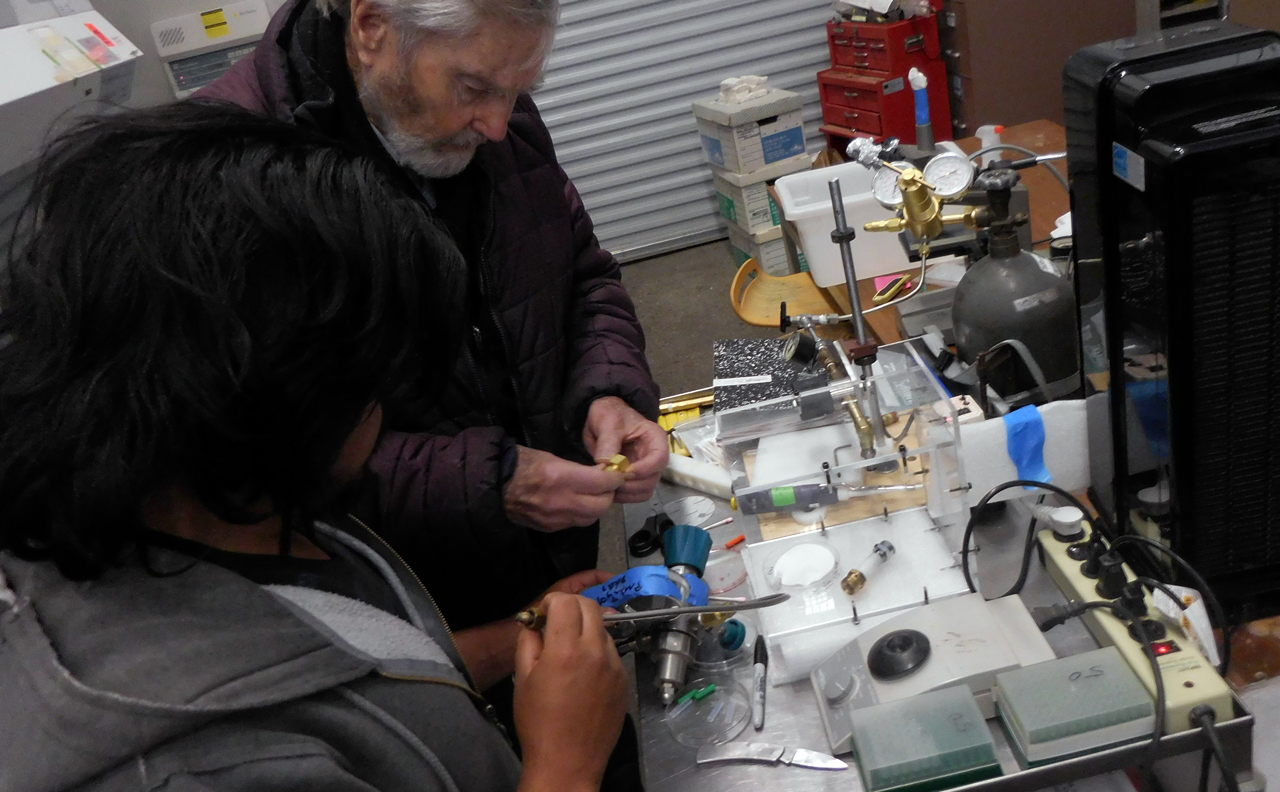David Alfred Johnson Ph.D
2 September 1931 - 4 February 2025
All of us of project GRFT lost a very good friend today
David was one of the project GRFT team from the start. He specialized in hardware engineering and development. He took charge of particle bombardment technology being used by project GRFT. He had an interest in this and stated that he thought there were many applications which this technology would be used for in the future and this was only the beginning. He was inspired by the DIY gene gun that had been built at BioCurious by Jay Hanson. Based on this design, he built two DIY gene guns for project GRFT. He designed 3D printed nozzles that were optimized for particle spread. David made many tests with the Gene guns to get the gas pressure adjusted for best cell penetration. He learned the basics of plant molecular biology in an amazingly short time and helped to get the contamination issues that we were having under control.
Project GRFT is where it is today, with the micropropagation pipeline in place and gene gun working for transformations, largely because of the knowledge, experience and skills he brought to us. I personally enjoyed every minute in the lab with David, and I am sure that all of us who had the pleasure of knowing him can say the same. He was at most of our meetings over the years. Sometimes he would have trouble with the audio settings on his device, but he would get that working and then have insights to share with us.
David was thoughtful with the analytical skill set of a great scientist. He worked very hard and got a lot accomplished. I was always hugely impressed by his abilities to work with a number of different technologies, and to see clearly how they all interact. Besides being a top scientist and inventor, David had may interests and abilities, for example as an artist and a poet. David had heart problems. He said he wasn't in much pain but that he got tired easily. Little over a week ago during one on the walks that he took for fresh air and exercise, his heart gave out and he collapsed which caused multiple severe injuries. He was taken to Highland Hospital. I went to visit him, and he was having trouble breathing. He couldn't swallow or talk. His wife Leticia was staying with him at the hospital and caring for him tenderly. I came back the next day, the doctors had changed his meds. He was breathing without a struggle and looked peaceful.
Ph.D. Physics (1972)
University of Hawaii. Honolulu, HI.
Dr. Johnson worked as a physist at UC Berkeley Lawrence Lab and the Stanford Linear Accelerator Center.
He did much pioneering work with high energy physics.
Dr. Johnson was the founder, director, and president of TiNi Alloy Company where he managed a research team engaged in development of products using shape-memory alloys.
He owns multiple patents and has published papers.
One of his inventions has travelled to the planet Mars
David Johnson and Hector Vera





